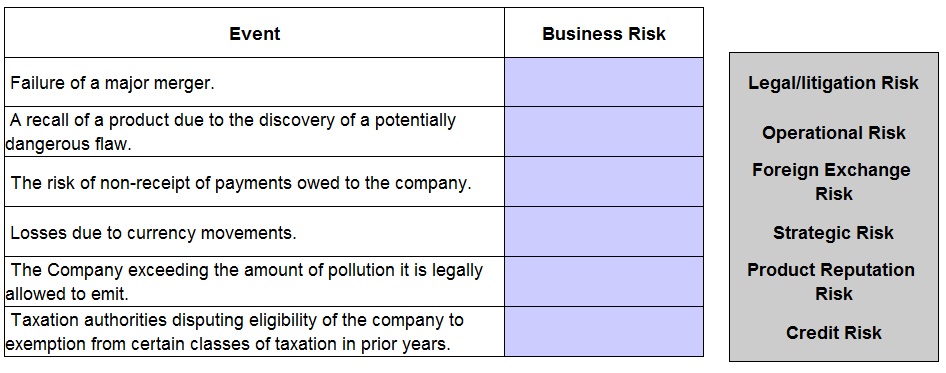CIMA P3 - Risk Management
You are the Management Accountant for P, a food manufacturing company with an annual sales revenue of $5 million.
You discover that the Production Manager's records are inconsistent. Raw materials purchased do not agree to the total recorded for transfers to production plus wastage. There is an average shortfall of 2% of purchases.
You investigated and discovered that there are often mistakes made during manufacturing that results in food that is safe to eat, but cannot be sold because of visual flaws. The Production Manager is supposed to scrap all such damaged product and write all such losses off as waste, but you discovered that he has been giving the damaged food to a charity that assists homeless people. No records are made of such gifts in order to conceal the losses due to manufacturing errors.
What should you do?
The senior manager in the accounts department is going on annual leave for three weeks and Jo, a supervisor is being put in charge of the department for that time.
Which TWO of the following statements are correct?
JKL makes large export sales to customers in country X, whose currency fluctuates significantly against JKL's home currency JKL also makes large purchases from suppliers in countrrOC All of these transactions are in country X's currency
JKL's treasurer does not actively hedge currency risks because there is a natural hedge in place due to the company making both sales and purchases in the same currency
JKL's board has instructed the treasurer to put active hedging measures in place because the risk report would otherwise have to disclose the fact that JKL has a currency risk which is not actively hedged
Which of the following statements are correct? Select ALL that apply.
Identify, from the list provided, which category of business risk most accurately describes the events detailed below.

A project requires a capital investment of £2.7million. The project will save £450,000 each year after taxation. Assume the savings are in perpetuity. The business risk of the venture requires a 15% discount rate. The company has to borrow £1million to finance the project at a rate of 9% and the net tax shield is 30%, the project supports debt which generates an interest tax shield of 0.30 x 0.09 x £1million, which is £27,000 per year in perpetuity.
Calculate the project's adjusted present value.
The long-term prospects for inflation in the UK and the USA are 2% and 6% per annum respectively.
The GBP/USD spot rate is currently GBP/USD1.71.
Using purchasing power parity theory, what GBP/USD spot rate would you expect to see in three months' time?
K plc is a large listed company in the retail industry. It has recently appointed T as a non-executive director. T has never had any previous involvement with K plc but is well known to K's Chief Executive PÂ because T is the Managing Director of K plc's largest supplier.
K has recently expanded into Asia. Doubts about the wisdom of the move have been expressed in the financial press with some journalists commenting that it has exposed K plc to higher degrees of risk than previously. The move had been approved by the Risk Committee which consists of four Non-Executive Directors (NEDs) all of whom have significant experience in business.
K plc does not have a Nominations Committee. Nominations to the Board are usually proposed by P and generally agreed by the other directors.
In relation to the above scenario which of the following comments is valid?
Which THREE of the following are key elements of cyber security risk governance?
IOP manufactures aircraft engines. The company is presently engaged in a scenario planning exercise to consider the implications of a possible ban on the use of fossil fuels by the year 2040.
Which TWO of the following would be realistic responses to the scenario?
HJK is a retailer, with more than 40 shops around the country. The directors suspect that a serious fraud has occurred at one of the branches and a team of internal auditors has been sent to investigate.
An analytical review investigation shows that sales revenue is in line with budget, but overtime payments to shop staff exceed budget by 20%.
How should the internal audit team proceed?




